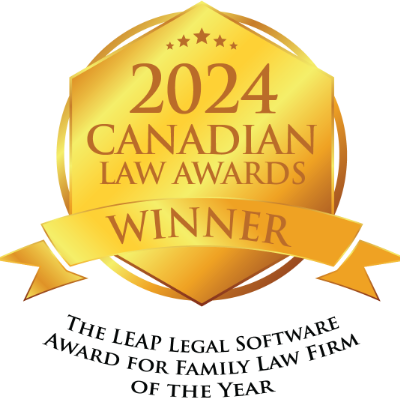
Avoiding Child Support Income Calculation Mistakes is critical particularly when the paying or receiving spouse is a high-income earner who owns a professional practice, a partnership interest, or a corporation. Founder, Lorne MacLean, QC recently named Top 25 Canadian Lawyer warns separated spouses to ensure they look at the right financial documents so they don’t leave tens or hundreds of thousands of dollars on the table each year.
Read here to find out how we set the Western Canadian record for child and spousal support at $116,000 a month, a record retroactive support award, and a lump sum of nearly $6,000,000 and over $22,000,000 of family property. Click here to see Nick Davies of our downtown family office quoted in Canadian Lawyer Magazine.
To get immediate help on Avoiding Child Support Income Calculation Mistakes call us toll-free across BC and in Calgary at 1 877 602 9900
# 1 Tip to help Avoiding Child Support Income Calculation Mistakes is to obtain the financial statements for the practice, partnership incorporation plus the personal tax returns!
# 2 Tip In Avoiding Child Support Income Calculation Mistakes is be sure to demand:
- personal tax return and the notice of assessment;
- company financial statement and assess for personal benefits deducted, income splitting with a new spouse, amortization, management; salary to the owner, hidden cash income and the like;
- general ledgers and shareholder loans accounts;
- capital dividend accounts; and
- additional documents based on what is discovered in the above documents

Avoiding Child Support Income Calculation Mistakes
1 877 602 9900
A new BC Court of Appeal case Quinton v. Kehler 2020 BCCA 254 reiterated how to correctly determine income for a business owner, professional, or partnership owner which will help you in avoiding child support income calculation mistakes:
[83]The approach to be taken in a s. 18 case was further considered by this court in Hausmann v. Klukas, 2009 BCCA 32, where Kirkpatrick J.A. for the Court first addressed the onus:
[51] While the purpose and application of s. 18 were outlined in Kowalewich, this Court has not heretofore established an onus test. Some post Kowalewich authorities from this province, however, have concluded that there is an “emerging presumption” that pre-tax corporate income will be assumed to be available to a payor unless evidence is led to the contrary. These authorities state that the onus in the circumstances is on the payor. As discussed in Jeffery v. Motherwell, 2006 BCSC 140, 36 R.F.L. (6th) 377, at para. 13:
Kowalewich has been applied on other occasions by judges of this court and is binding authority. One of those cases Bartkowski v. Bartkowski (2003), 37 R.F.L. (5th) 242 (B.C.S.C. [In Chambers]), albeit dealing with very different factual circumstances in that the payor contended that his line 150 income was inflated to take advantage of tax benefits, the court said this about the authorities post Kowalewich:
I am of the view that these cases reveal an emerging presumption that the corporation’s pre-tax income will be assumed to be available to the shareholder payor for the payment of child support unless compelling evidence is led by the payor spouse to support the conclusion that re-investment is necessary to sustain the company as a viable enterprise. … (para. 51)
The onus is on the payor to provide the necessary evidence that the corporation’s pre-tax income is not available to the payor. The court should not have to ferret out the necessary information from inadequate or incomplete financial disclosure. While Bartkowski says the evidence of the payor must be compelling, I prefer to use the word clear when discussing the necessary evidence of business circumstances as the former word might be taken to suggest a higher standard of proof than is called for by Kowalewich.
[52] I respectfully agree with the above comments in Jeffery v. Motherwell.
[Emphasis added.][84]This Court in Hausmann rejected an approach bearing some similarity to the approach taken by Mr. Bulthuis in the case at bar, there proffered by an expert accountant, Mr. Mynett: that retained earnings, rather than pre-tax corporate earnings, should be regarded as money available for child support:
[65]Mr. Mynett’s suggestion is not without precedent. Many cases indiscriminately refer to pre-tax corporation income and retained earnings and look to retained earnings in an application under s. 18 of the Guidelines. The error in that approach was discussed in Miller v. Joynt:
[27] In my view the judge erred in utilizing the annual net change in retained earnings as his starting point, rather than the corporation’s pre-tax income. Retained earnings are the result of subtracting from pre-tax earnings income tax and shareholder dividends, and other changes to the capital accounts.
[28] As the Mother points out, section 18(1)(a) refers to pre-tax earnings. Likewise, Schedule I of the Guidelines uses pre-tax (Total Income from Line 150 of the T1 General form) income: s. 16. This suggests that Parliament intended pre-tax earnings to provide the starting point for determining income under the Guidelines, subject to any allowable deductions pursuant to Schedule 3 of the Guidelines.
[29] While there are cases where retained earnings have been used as the starting point for determining the amount to attribute to the payor’s income (see e.g., Broumas, Rattenbury v. Rattenbury, [2000] B.C.T.C. 326; 2000 BCSC 722, and Cook v. McManus (2006), 301 N.B.R. (2d) 372; 783 A.P.R. 372; 2006 NBQB 138, there has generally been no explanation given for the use of retained earnings.
[30] The Father’s submission that the use of retained earnings by the judge was tantamount to ascribing only part of the pre-tax income to the Father (as permitted by section 18(1)(a)) cannot be accepted. If that was the judge’s intention, he should have said so. Absent such an explanation, the judge erred in principle in using the corporation’s retained earnings rather than its pre-tax income as a starting point for his calculations.
[66]I respectfully agree with the approach described in Miller v. Joynt. …
[Emphasis added.][85]From these cases, I extract the following principles applicable to this case. First, the Guidelines should be interpreted in light of their stated objectives, including the ability to calculate child support in an objective manner that ensures consistent treatment of spouses and children who are in similar circumstances. Second, under a s. 18 approach, the corporate income method is likely to be the fairer method of determining income of an individual who wholly controls a corporation. This method allows a court to include all income available for child support an intact family would utilize. Third, where that approach is appropriate, pre‑tax corporate earnings, not retained earnings or earnings after payment of taxes, are the starting point for an assessment of Guidelines income. Fourth, where a company is wholly owned by the payor, the onus is on the payor to provide evidence that his pre‑tax corporate earnings are not available to him.
We hope this blog helps you in avoiding child support income calculation mistakes.








